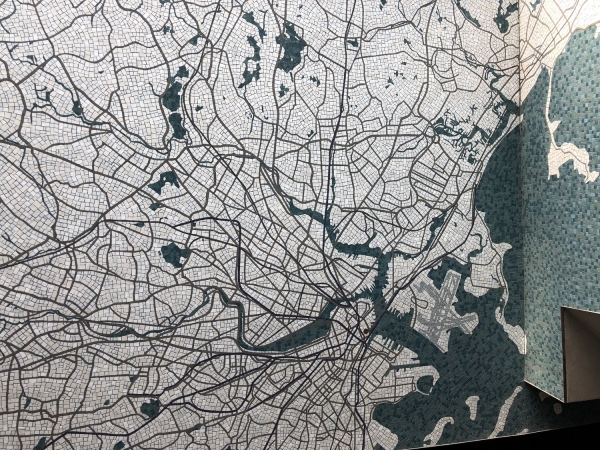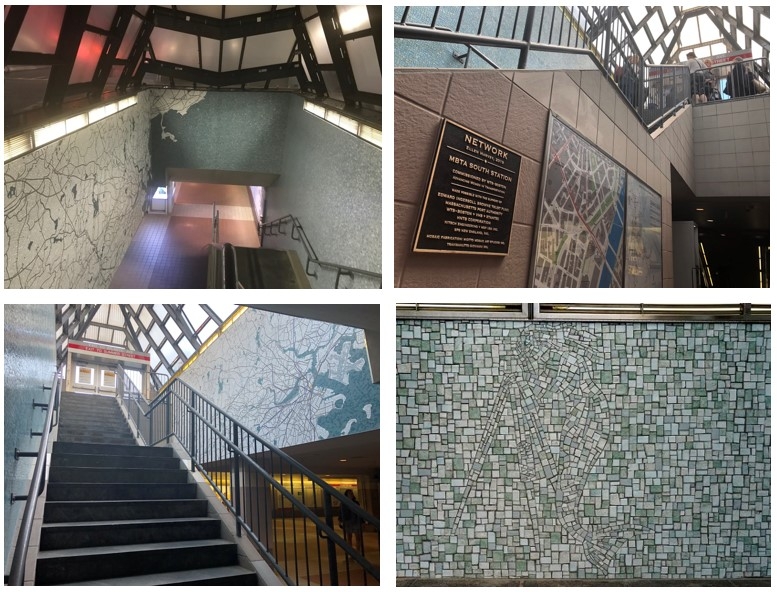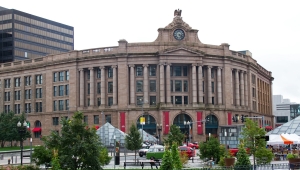Public Art Celebrating Women in Transportation
Women in Movement
WTS-Boston commissioned a new public art installation to celebrate the contributions, diversity and creativity that women bring to the transportation industry. Working with MassDOT and the MBTA, the piece was installed in Red Line Concourse at South Station. The art is a permanent work commemorating women’s contributions to transportation in the Greater Boston area. The Project has enhanced this main transit hub and continues the proud tradition of public art already adorning the MBTA system. Learn more about the art and the artist here. WTS-Boston thanks the generosity of many project supporters that made this installation possible.


Our public art project was inspired by strong women in the transportation industry and a desire to improve our community through public art. Four finalists submitted proposals to the selection committee. After a competitive review process NETWORK by Ellen Harvey was selected. Click here to learn more about the artist and the concept behind her art.
The public art installed in South Station embraces WTS’ mission by focusing on the theme of women in movement. The piece reflects generations of women moving women upward and enabling movement of people and goods. It represents peers working to improve prospects for women in transportation, and as creators of infrastructure and services, responsible for transporting people and goods throughout the United States and abroad. WTS also considers “the spirit of community, inclusiveness, and mutual support… one of our greatest assets.” To this end, the public art engages viewers to understand women’s role in transportation. Furthermore, the piece is dynamic and highlights its location within one of the most prominent transit hubs in the city of Boston.
Overview and History
The WTS-Boston Public Art Committee worked for 12 years to bring the art installation from concept to reality. NETWORK was formally unveiled in May 2019. Click here to read more about the project's development history and press coverage of this long-awaited installation.
The MBTA was the first public transit agency to have a formal public art program. Click here to view existing public art pieces in the MBTA collection and learn more about finding public art in a nearby station.
Boston's South Station, was built in 1899 to combine the services of five passenger lines converging in the city. By the time the station was completed, it was the largest in the world, accommodating 40 million passengers annually. The initial project included the main headhouse building, built by architects Shepley, Rutan, and Coolidge, and a nearby train shed for boarding. The headhouse was built in a Neoclassical Revival-style and was filled with spectacular ornamentation that is still visible today, from the marble floor mosaics to the Station's defining clock, 12-feet wide and topped by an eagle with an eight-foot wingspan.

After a period of post-war decline, South Station began to deteriorate. By the 1960s, many of the rail companies initially involved in the station had declared bankruptcy and the station remained underutilized. In 1965, the Boston Redevelopment Authority (BRA) purchased the building and began to disassemble the building. The demolition garnered attention from a number of local groups determined to save the celebrated structure and by 1975, South Station was added to the National Register of Historical Places. At this time, the station continued to serve commuter rail and Amtrak service, and the decision was made to sell the station to the Massachusetts Bay Transportation Authority. In 1984, the MBTA began a $195 million dollar restoration project that was ultimately completed in 1989. The project improved the station's transit infrastructure and public amenities, making South Station an impressive entrance to the city of Boston.
Today, South Station features local restaurants, community programming, and access to the plethora of transportation options available in the city. In addition to serving Amtrak and commuter rail services, South Station connects downtown Boston to the subway and Silver Line service, providing a direct link to Logan International Airport. South Station has the highest passenger volume of any rail station in New England and is the sixth busiest train station in the Amtrak system with over 1.4 million annual boardings. The Red Line/Silver Line Concourse, where the WTS Public Art is located, sees 57,000 commuters on an average weekday.
The sources for this article, as well as resources for additional information, can be found using the following links: